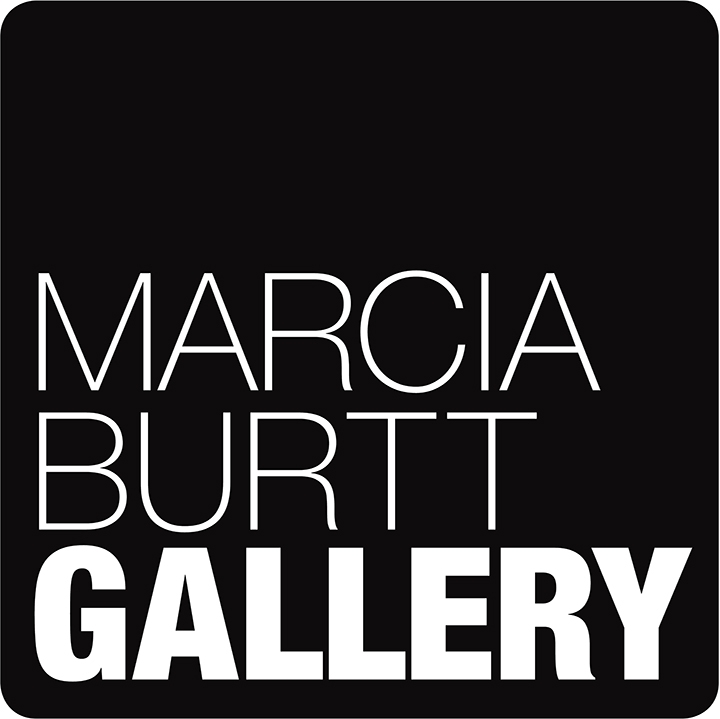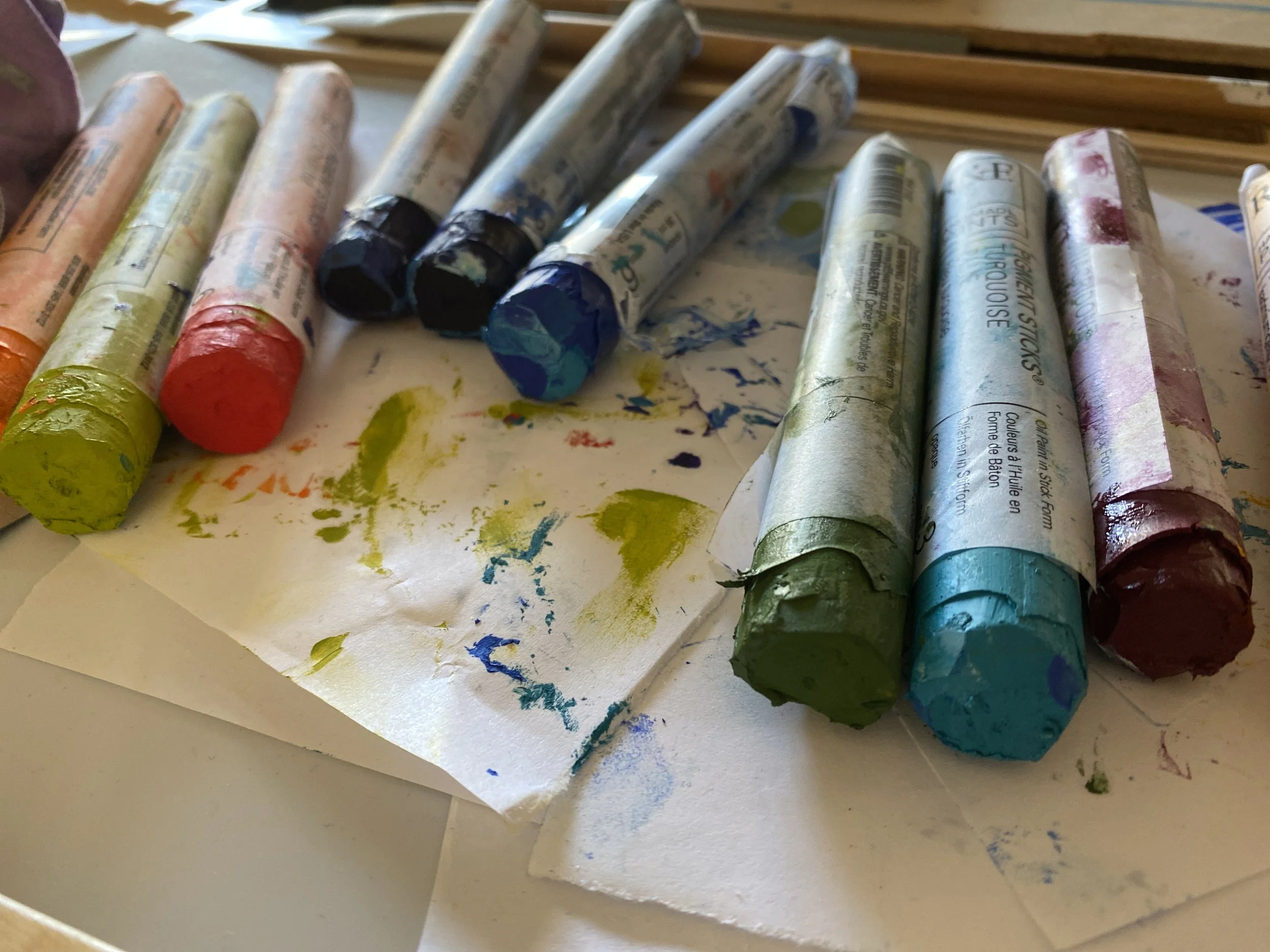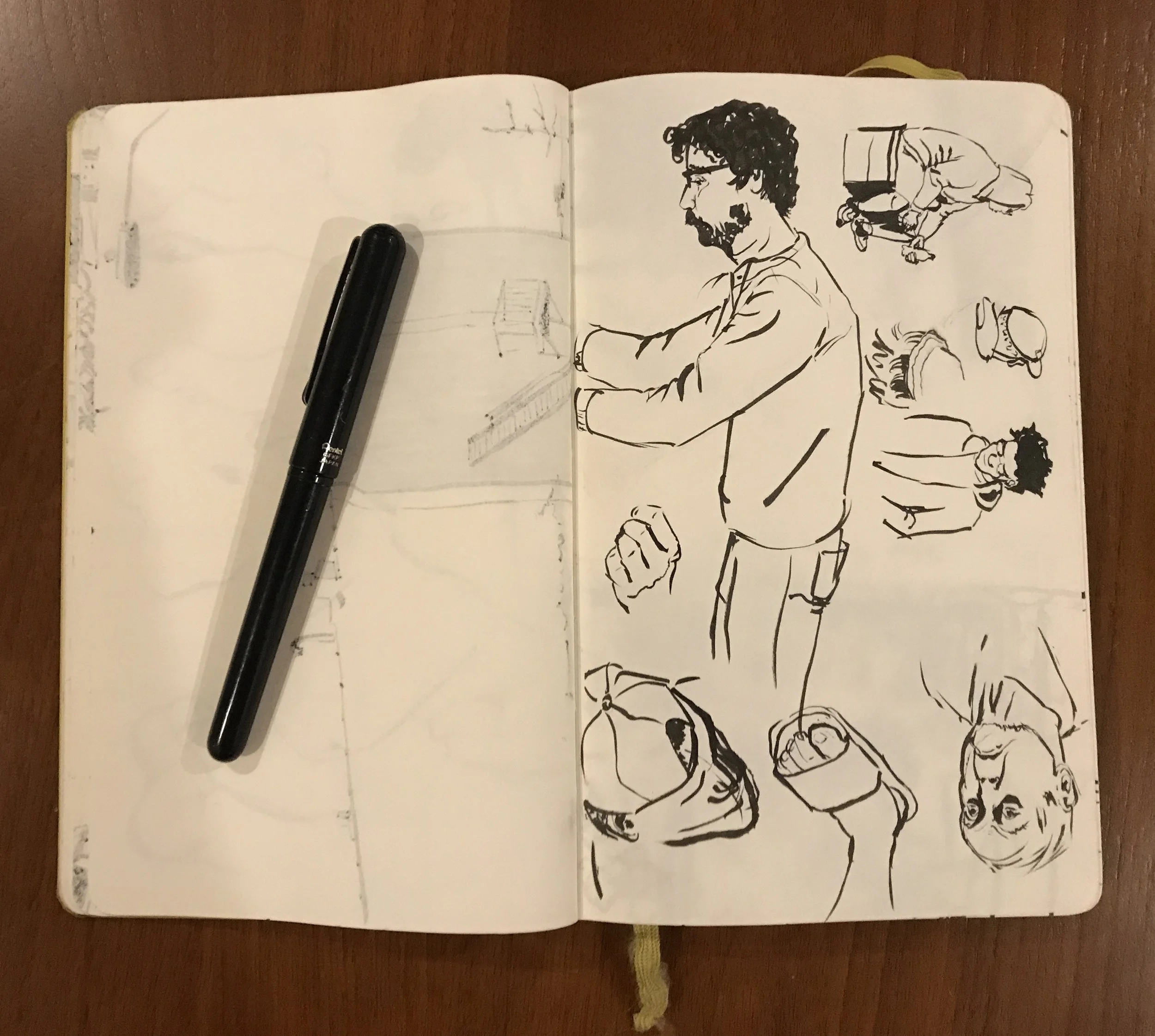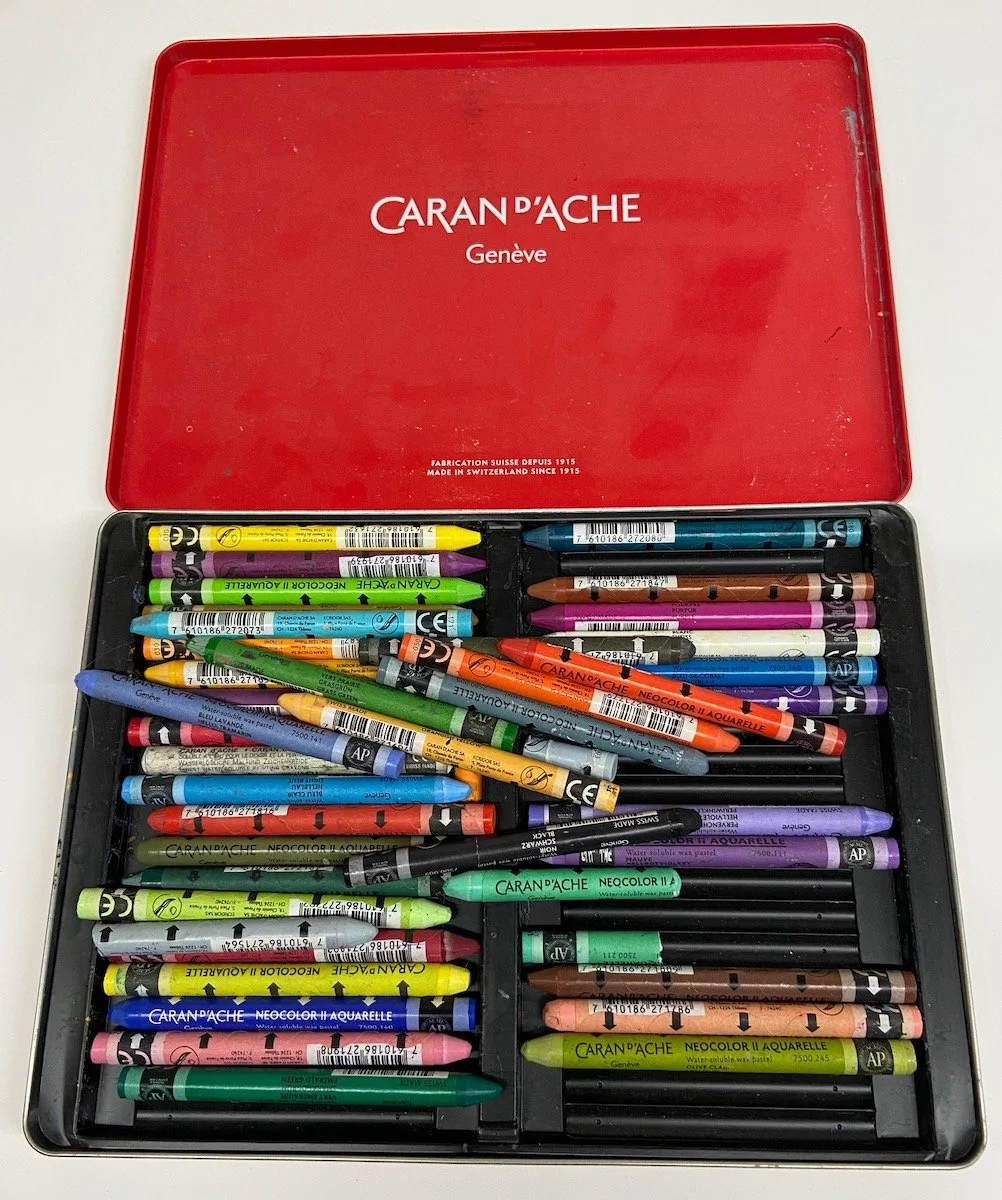GIFT GUIDE
Need some advice on what to get the painter in your life? We have some suggestions for what to get your favorite beginner, intermediate or professional artists.
2023 edition
For 2023, we are focusing on art books. We asked friends and gallery artists what their favorite books are that instruct and inspire creativity.
I've been reading Edmond de Waal's The White Road: Journey into an Obsession. Ceramist de Waal writes of his expansive travels and research on porcelain. You don't have to be into clay to benefit from the importance of learning the history of your craft and materials.
Randall David Tipton has listened to Elizabeth Gilbert's Big Magic!: Creative Living Beyond Fear audiobook three times. "She gets it right !"
Marilee Krause recommends a book from one of my favorite writers: A Swim in a Pond in the Rain by George Saunders. "It is a beautifully written, funny, and engaging examination of the Russian short story by a master teacher at Syracuse University. There are plenty of tips on the creative process and honoring one's voice that translate into any art form. Tolstoy, Chekhov, Turgenev, and Gogol."
Exhibition catalogs allow you to extend the excitement of a great show or take you to museums you miss. In honor of Ann Philbin's retirement from the Hammer Museum, the catalog from one of my favorite exhibits during her tenure: Lee Bontacou: A Retrospective.
From Ian Roberts: "One of my favorites is Wyeth at Kuerners. It's mainly just sketches, but it is so fascinating to see his process. I read Ross King's Mad Enchantment recently, too, the story of Monet making his gardens and then creating the painting series that now sits in the Musée de l'Orangerie in Paris."
Artist and gallery friend Sarah Ransohoff is an avid collector and reader of art books. She treasures her used bookstore finds — Hawthorne on Painting; Beyond the Easel: Decorative Paintings by Bonnard, Vuillard, Denis, and Roussel, 1890-1930 by Gloria Groom; and Daily Rituals: How Artists Work by Mason Currey, Several short sentences about writing by Verlyn Klinkenborg, and Free Play by Stephen Nachmanovitch.
We encourage you to shop at your local book and museum stores. They offer you the opportunity to browse before you buy and find new treasures missing from your list.
And for a free digital read, the Getty recently published online a historical treasure from the 16th century. "The Digital Florentine Codex gives access to a singular manuscript created by Franciscan friar Bernardino de Sahagún and a group of Nahua elders, authors, and artists. Written in parallel columns of Nahuatl and Spanish texts and hand painted with nearly 2,500 images, the encyclopedic codex is widely regarded as the most reliable source of information about Mexica culture, the Aztec Empire, and the conquest of Mexico."
2022 edition
Oil sticks are often confused with oil pastels, but they are not the same. You need to be careful using oil pastels with oil paints because the waxes in them don't dry. But because oil sticks are oil paint in solid form, that's not a problem. Pamela Zwehl-Burke loves that you can draw and paint with them. Anne Ward uses them to sketch shapes for her paintings and to create lines on top. They are solid yet buttery, dry like oil paints, and are a lot of fun.
Gallery friend and artist Sarah Ransohoff recently challenged herself to paint bigger and found the perfect brush to reach her goal. "I have started using a mop brush with a finer point for watercolors which I highly recommend. The big belly holds a lot of paint so that every stroke can be more powerful." She is also having fun with Kuretake Gansai Tambi Pastel Matte watercolors. The pans are large and work nicely with big brushes.
This year's "experience" recommendation is a gift of creative collaboration. Collaboration can help you get beyond artist's block, push you out of your comfort zone, and help non-artists learn to create.
The Surrealists invented collaborative art game Exquisite Corpse. MOMA has an excellent history and description of it here: www.moma.org/magazine/articles/457: one person starts a drawing of a figure, folds it back to hide it, and subsequent people finish the drawing not knowing what came before. It doesn't have to be a figure. It can be a dog, a tree, or a building. Whatever you want. Go wild.
Collage is having a moment. Spurred in part by the Santa Barbara Museum of Art's exhibit Architecture of Collage: Marshall Brown, the exhibition will inspire you to get out your scissors. My favorite collage glue is UHU. It is easy to clean up, acid-free, and won't wrinkle your paper.
Need inspriation? Take a tour of Santa Barbara's murals and public sculptures. The SB County of Arts and Culture has a crowd-sourced map of public art. It would make a great group bike ride or walking tour.
—Cynthia
If you are a practicing artist, I re-read The War of Art by Steven Pressfield every year or two. It’s an excellent book, a quick read, and will save you thousands on therapy.
—Marcia
2021 edition
I received a wonderful gift and painting tip from gallery artist Randall David Tipton. “I’ve really enjoyed these Caran d’Ache watercolor crayons from Switzerland. They’re really fun to use on damp paper and perfect for adding small bits of color into otherwise finished paintings. This set has 40 crayons I believe and there is one set for sale with twice as many colors. I deeply regret not buying that one.” These would pair nicely with the watercolor block that I recommended last year. If you are interested in learning more about Randall’s approach to painting, you should check out his “Painter’s Process” blog which he has been posting since 2008. Marcia is a fan and regular reader.
Sarah Ransohoff
This notebook would also work nicely with former gallery assistant Sarah Ransohoff’s recommendation of Pentel Arts Portable Pocket Brush Pens, “you can be delicate or bold, and it's an easy, mess-free way to play.” An even less messy option is an Apple iPad Pro. Inspired by gallery artist Anne Ward’s iPad studies, Sarah has been sketching her recent travels. It’s a big splurge, but probably also useful when Sarah is working on her cartoons which have been published by the New Yorker online and in print.
Last year I recommended museum memberships, this year I would like to promote local workshops and classes. I treated myself to a workshop at Clay Studio this summer. Clay Studio is a non-profit ceramic arts center located in the Goleta foothills. They offer numerous workshops, open studio access, a ceramics gallery, and even wellness classes. We are very lucky to have this local resource.
Another way to support your community is by shopping at your local arts and crafts supply stores rather than online. Gallery artist Marilee Krause suggested stamp-making as a fun introduction to printmaking. The clerk at a local store can give you advice on which tools and papers would make a nice starter kit.
All my projects start with pen and ink. From writing to paintings, I start with handwritten notes and drawings. My favorite notebook is Fabriano’s 85 g/m A5. It’s inexpensive and the spiral-bound means I can rip out pages without hurting the binding. It’s a smooth white that takes ink nicely. It may be too thin for wet mediums, but perfect for pencil and pen. And my choice pen is Twsbi fountain pens with Pilot’s Iroshizuku ink. I try to avoid disposables and Twsbi pens are great starter fountain pens that are easy to fill. I have both an Eco and the Diamond 580.
Marilee Krause
2020
Marcia Burtt has a recommended supply list on her website, which is great for plein air painters who use acrylics.
Brushes. They wear down, they get damaged, they splay, and you wind up having to repaint over and over to get the effect you want. They can be expensive, but you need good brushes or you will never get the spring, accuracy, or refinement you want.
Marcia likes Isacryl brushes by Isabey, made for acrylics. She especially likes the filbert shape. They handle sitting in water superbly, they have spring, wide frontal surfaces and slender edges to allow carving shapes with precision. Anne Ward recommends Escoda filberts and Guerilla Painter short handled brushes.
I was given a glowing recommendation for some budget brushes from my friend Margaret. “These brushes are my favorite kind of brush — they are also among the cheapest brushes. They are Princeton Snap series brushes — really crisp, long-lasting. I use them with watercolor, ink, and gouache.”
A selection of medium size flats, brights and filberts will be useful to artists who paint big or small. A big beautiful sable for watercolors!
Brush soap. It’s something an artist will always need.
Winsor & Newton Brush Cleaner and Restorer is a great gift — it works for synthetic brushes used for acrylic as well as for oil brushes that haven’t been properly cleaned. Soak overnight and renew your brushes.
Watercolor Block. A 300gsm watercolor block, hot or cold press, is an incredibly versatile substrate. You can use it for drawings and watercolors, and when gessoed, acrylic and oil paint. A gift of gesso, the kind that has marble dust added to it, can make the sheets have a refined tooth that’s a joy to use: Grumbacher Acrylic Gesso 525, which Marcia likes because of its tooth, is a great acrylic primer which you can paint over with either acrylic or oils.
Paints. This one requires snooping unless you are hoping to give a surprise boost to a beginner. Paints vary in viscosity and pigment quality, and you will want to get the right colors and brand. Take a photo of your special artist’s paint set for reference at the art store. A general rule, get the professional grade, never the student version!
A beginner’s paint set as offered by even reputable paint brands will not give adequate range of color, usually focusing on inexpensive pigments.
See Marcia’s suggestions to get the best color range from the fewest tubes of Golden acrylic, her preferred brand. https://www.marciaburtt.com/painting-acrylics-tips/limited-palettes
Susan Petty has a color recommendation, cobalt purple light. “Wildly expensive but the best for lightening and softening other colors. I rarely use it straight but never paint without it.” Her brand of choice is Winsor & Newton oils and watercolors.
Maybe you want to give your artist something to experiment with. Gouache, an opaque watercolor, has had a recent resurgence. Anne Ward’s preference is Holbein Acryla gouache, which is water soluble when wet, but which cannot be re-wet. When it dries it’s permanent. I also use Holbein gouache, their regular artist line. Margaret recommends Schmincke Horadam as a luxe option, and Kuretake Gansai Tambi for pan style watercolors.
Burley Travoy Trailer. I’m an avid cyclist and I often need to haul things. The Burley Travoy is easy to hook up to any bike, including e-bikes with fat tires, and folds down for compact storage. It’s also great when traveling on foot, bus, train, or car. Because it is built to withstand a bicycle commute, it can make it over rough terrain. It’s not inexpensive, and the bags pictured cost extra, but you get what you pay for. And If something does break, I can get replacement parts from Burley. Perfect for hauling plein air painting gear.
Marcia loves the bicycle cart, but also loves her Osprey backpack that her Jullian original half-size easel slides into perfectly. She can travel on foot for a good distance with no strain. Marcia strongly suggests taking your folding easel and major equipment into the store and getting fitted for size. I also use and love Osprey packs.
Odds and ends
Kneaded erasers are a really versatile tool, and self cleaning up to a point — there comes a time when there is too much graphite or charcoal for the stretching and kneading to disperse.
A Multi tool for your plein air painter. One with pliers to open a stuck paint tube cap, and screw drivers to tighten the screws on a travel easel. And maybe a cork screw or bottle opener for the end of a day of painting.
A Tide Calendar. Marcia loves Tidelines calendar. An annual subscription gives you a wall calendar with stunning wave photos, and very importantly, a small calendar to carry in your painting gear.
The calendar shows graphically the rise and fall of tides as well as the lunar cycle in a way that is not replicated anywhere online, as far as she's been able to find.
Online charts are all columns of numbers, while Tidelines shows at a glance where the tideline will be as it moves in and out, high and low, throughout the lunar cycle. Small lighter print gives exact times and tide heights and phases of the moon.
Then she can make her plans accordingly — paint at the beach when the difference between high and low tide is minimal or be there when the highest king tides of winter are surging over the lagoon’s edge, creating both a tidal bore within the lagoon and a wide wet sandy reflection on the ocean side. Thrilling moments, easy plans. A must if you love to paint the ocean’s edge!
Self Centering Measuring Tape. If your artist friend ever has to install an exhibition, they will want one of these. It’s the kind of tool you didn’t know you needed until you get it. Then you can’t live without it.
And of course, art.
Looking at art is one way artists learn and get ideas. A gift of an original painting is a daily window into another artist’s method.
Membership to a local museum encourages spontaneous visits and benefits the entire community.
Books and prints can supplement learning from looking. Marcia is always recommending Ian Robert’s “Creative Authenticity.” It’s not a how to, but more of a guide to find your way. We don’t always have it in stock at the gallery, but you can probably order it from your local bookstore. If you live in Santa Barbara, here is Chaucer’s link.
—Cynthia

























